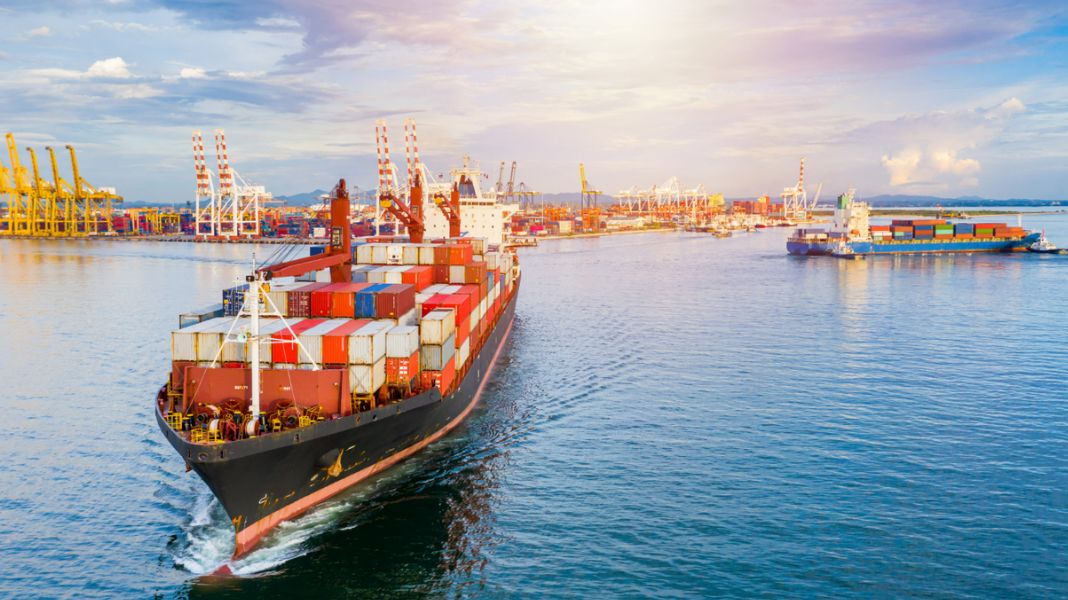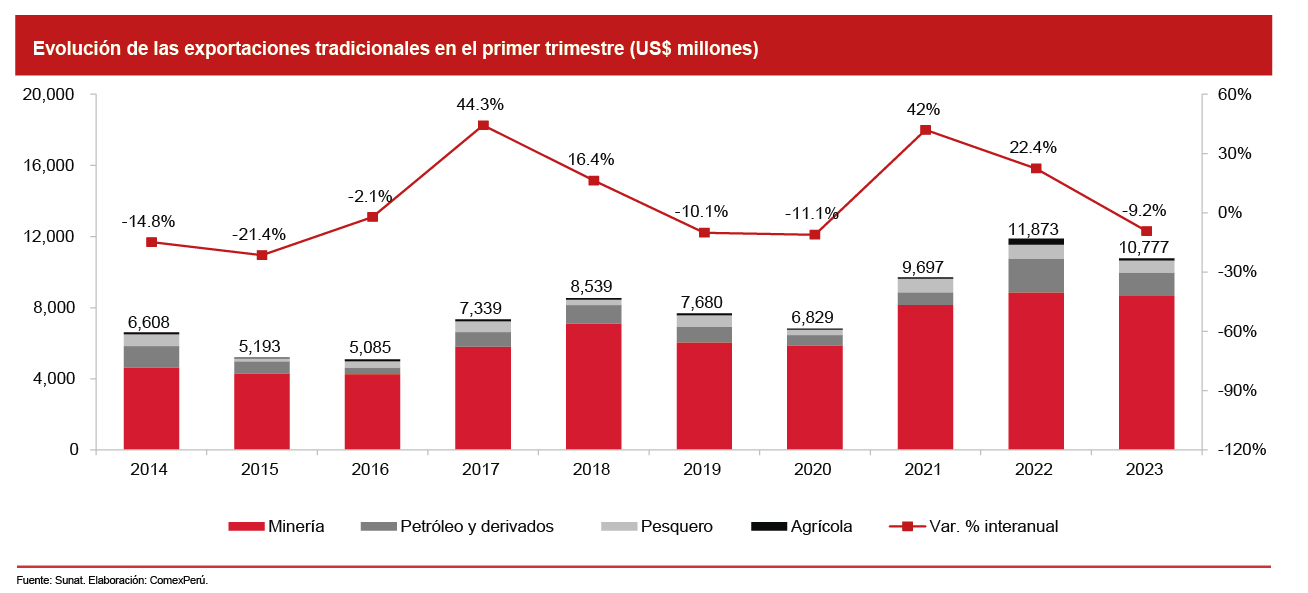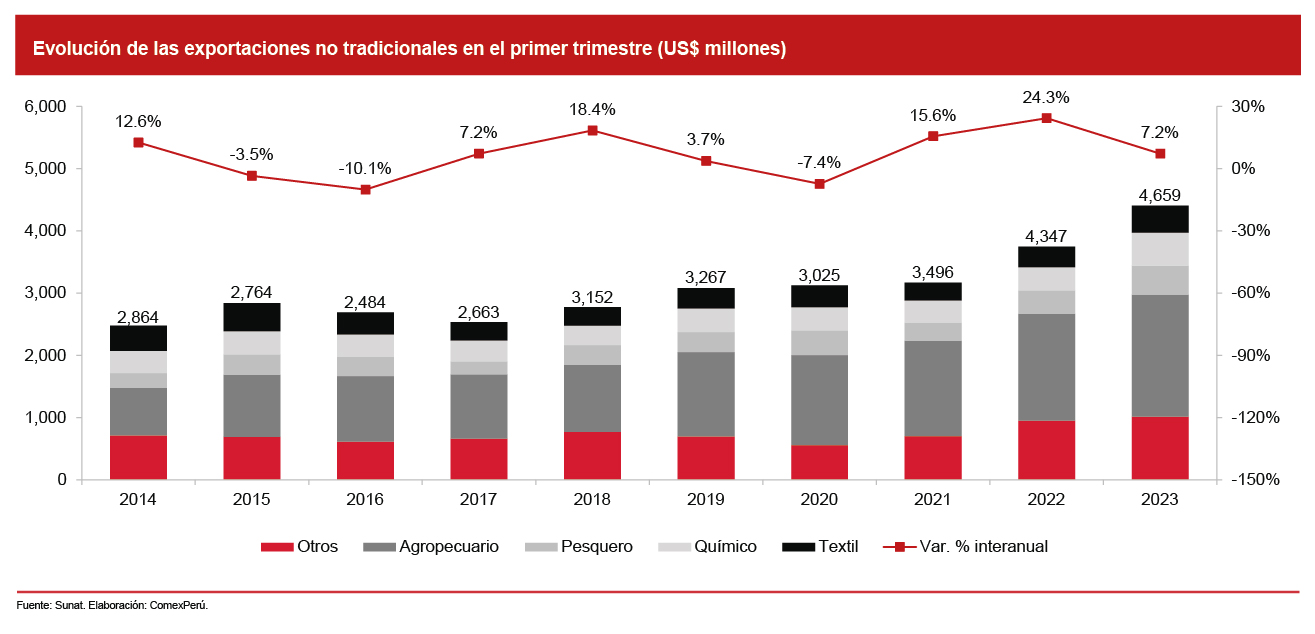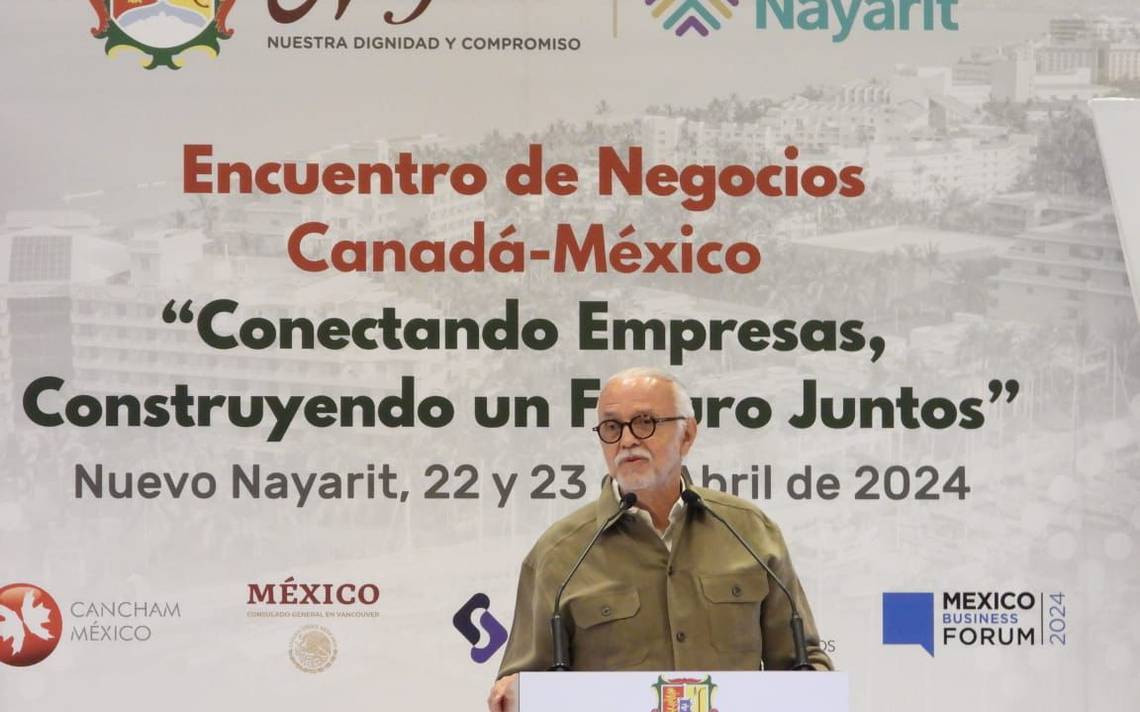Although the total exports in the first quarter in 2021 and 2022 showed an increase of 33.9% and 22.9%, respectively, it was the opposite this year, as it was noted that the total shipments amounted to 15,436 million USD, which means a decrease of 4.8% compared to the same period a year earlier, according to Sonnet figures. It should be noted that the value of our shipments has shown an average annual growth rate of 5.6% in the past 10 years over the period analyzed.
For its part, it is important to stress that in January and February 2023, total exports decreased by 10.4% and 11.7%, respectively, compared to the same month of the previous year. On the other hand, the result for the month of March of the current year amounted to 5,803 million US dollars, an increase of 7.7% compared to March 2022.
With regard to traditional exports, these exports continued to be more concentrated, as in previous years. Its share reached 69.8% of total shipments during the first quarter of the year. However, shipments of the item decreased by 9.2%, recording a value of $10,777 million compared to $11,872 million in the same period of the previous year.
Under the item, shipments from the mining sector stood out, with a value of $8,669 million and a decrease of 2.1%, mainly due to lower global prices of copper, gold and zinc, according to the Energy Department. and mines (minim). It is followed by the oil and derivatives sectors ($1,304 million, -31.8%), fishing ($694 million, -11.2%) and agriculture ($110 million, -65.9%).
In terms of the main destination countries for traditional exports, China ranks first, with $5,156 million, a year-on-year decrease of 0.4%. It is followed by the United States ($1 billion, +38.1%), Japan ($627 million; -27.6%), Canada ($535 million, +2.8%) and South Korea ($532 million, +2.8%). -42.1%) while the remainder comes to $2,927 million (-20.2%). The top three countries cover 62.9% of our total conventional shipments.
As for non-traditional exports, they continue to show good performance, with $4,659 million shipped during the first quarter of the year, which means an increase of 7.2% compared to the same period in 2022. The main sectors of this category were agriculture, with a total $2,157 million, up 9.8%; fishing ($599 million, +29.2%); Chemicals ($456 million, -13.5%) and textiles ($434 million, -1%). The remainder added $1,013 million (+6.4%).
For its part, the United States was the main recipient of our non-traditional shipments, with a value of $1.427 million and an increase of 9.7% over the same period of the previous year. It is followed by the Netherlands (341 million USD, +4.4%), China (319 million USD, +57%), Chile (287 million USD, -1.7%), Mexico (240 million USD, +50.5%) and the rest ( $2,045 million USD, -1%). Similarly, the top three countries concentrate 44.8% of total non-traditional exports.
In terms of major products, copper ores and concentrates contributed the most to exports (4,310 million USD, +6%), as well as gold (1,489 million USD, -23%). Fresh grapes (US$704 million, +26.9%), LNG (US$629 million, -50.9%), fishmeal (US$600 million, -6.8%), squid and squid were also prominent. 243 million, +218%) and silver metals (215 million USD, -11%). Its share reached 53.1% of total exports during the first quarter of the year.
Regarding the departments that contributed the most to total exports between January and March 2023, compared to the same period last year, are Lima (2872 million USD, -36.4%), Ica (1.974 million USD, -2.17%), Arequipa (1 ,542 million USD, -0.5%), Ancash (1,392 million USD, -7.8%) and Moquegua (1,249 million USD, +71.3), where mining and agricultural products stand out. In contrast, San Martín (36.4 million USD, -2.4%), Ucayali (29 million USD, -28.4%), Madre de Dios (12.4 million USD, -31.1%), Amazonas (7.1 million USD, – 36.7%) and Huánuco (US$2.7 million, +1.3%) are the divisions that took the bottom spots.
Mining and agricultural exports play an important role in the development of our foreign trade, but it is also important to promote other sectors, traditional and non-traditional, in order to achieve greater economic growth and provide more business opportunities for more Peruvians, especially considering that the sector allows for decentralized development.







